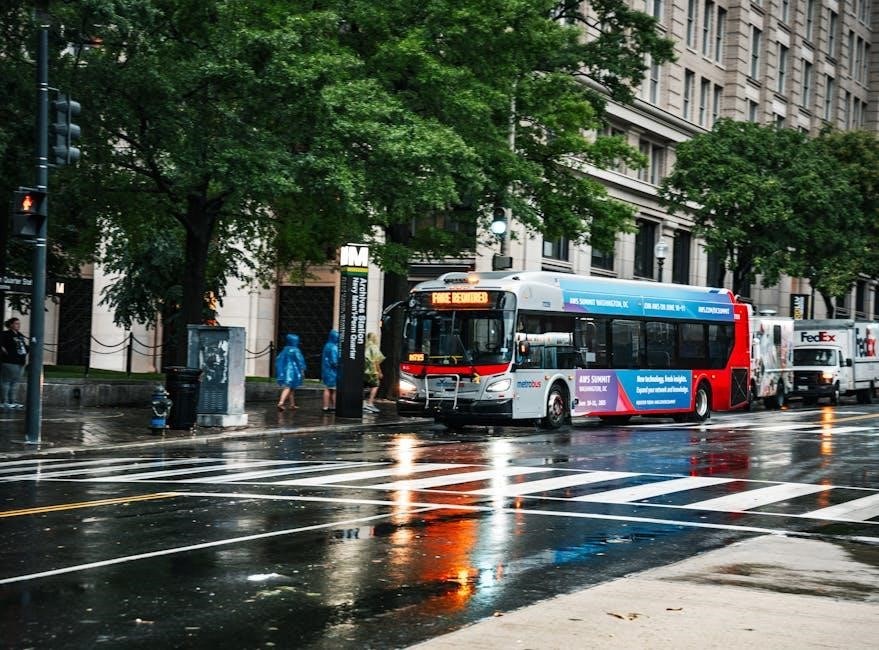MS440 Chain Specs PDF: A Comprehensive Guide
Navigating MS440 chain specifications requires understanding pitch, gauge, and length. Online resources, like GHS parts diagrams, offer detailed compatibility charts for chains and sprockets.
The Stihl MS440 chainsaw is a legendary workhorse, renowned for its robust construction and high performance, specifically designed for professional users. Introduced as a successor to the MS441, it quickly gained popularity due to its improved fuel efficiency and power-to-weight ratio. This saw excels in demanding applications like felling, bucking, and limbing.
Understanding the intricacies of the MS440 extends beyond its engine; proper chain selection is paramount for optimal cutting performance and safety. The MS440’s design allows for compatibility with various chain pitches and gauges, influencing its versatility.
Finding accurate chain specifications is crucial for maintaining the saw’s efficiency. Resources like parts diagrams from suppliers such as GHS provide essential details. Whether you’re rebuilding a saw or simply replacing a worn chain, knowing the correct specifications ensures compatibility and maximizes the MS440’s potential. It’s a saw built to last, and proper maintenance, starting with the chain, is key.
Understanding Chain Pitch and Gauge
Chain pitch refers to the distance between consecutive cutting teeth, measured in eighths of an inch. The MS440 commonly utilizes a 3/8″ LP (low profile) pitch, offering a balance between cutting speed and smoothness. Chain gauge, conversely, defines the thickness of the drive links, impacting the chain’s durability and ability to handle power.
For the MS440, typical gauge options include .050″ and ;058″. A .050″ gauge is suitable for lighter tasks and smaller diameter wood, while .058″ provides increased robustness for felling larger trees. Selecting the correct gauge is vital; an incorrect gauge can lead to improper chain seating and increased wear on the bar and sprocket.
Compatibility charts, often found on GHS parts listings, detail the appropriate combinations. Holzfforma G444 chains, frequently interchangeable with the MS440, often come in .063″ gauge, requiring a corresponding bar and sprocket. Understanding these specifications ensures optimal performance and longevity.
Standard Chain Specifications for the MS440
The Stihl MS440 typically employs a 3/8″ LP (low profile) pitch chain, recognized for its efficient cutting and reduced kickback characteristics. Regarding gauge, both .050″ and .058″ options are frequently used, dictated by the intended application. For general purpose cutting and smaller timber, a .050″ gauge is often preferred. However, professional arborists and those tackling larger diameter wood generally opt for the more durable .058″ gauge.
Genuine Stihl chains are engineered for optimal performance, but compatible alternatives from brands like Oregon and Homelite exist. When sourcing replacements, referencing GHS parts diagrams ensures correct fitment. Bar size significantly influences chain length (detailed later), and the standard sprocket is a 7-tooth, 3/8″ pitch configuration.
Maintaining these specifications is crucial for safety and efficiency. Incorrect chain parameters can lead to premature wear, reduced cutting power, and potentially hazardous operation.
Chain Pitch Options: 3/8″ LP
The 3/8″ LP (low profile) chain pitch is the most common and recommended option for the Stihl MS440. This pitch strikes a balance between cutting speed, smoothness, and reduced vibration, making it suitable for a wide range of forestry and arboricultural tasks. The “LP” designation signifies a smaller drive link radius, contributing to a lower profile and decreased kickback potential compared to standard 3/8″ pitch chains.
Using a 3/8″ LP chain with the MS440 ensures compatibility with the factory-installed sprocket and delivers optimal power transfer. While other pitches might fit with sprocket changes, they are not advised. Holzfforma G444, often interchangeable with the MS440, also frequently utilizes this 3/8″ LP pitch.
Selecting the correct pitch is paramount for chain longevity and saw performance. Deviating from the 3/8″ LP specification can lead to inefficient cutting and increased wear on both the chain and the drive components.
Chain Gauge Options: .050″ and .058″
The Stihl MS440 typically utilizes either a .050″ or .058″ chain gauge, representing the thickness of the drive links. The choice between these gauges depends largely on the intended application and the bar size being used. A .050″ gauge is generally preferred for faster cutting in less demanding conditions, while the .058″ gauge offers increased durability and is better suited for felling larger trees or cutting hardwoods.
Many sources indicate that a .063 gauge is also commonly paired with the MS440, particularly when using longer bars. When rebuilding an MS440, selecting the correct gauge is crucial for proper fit and function. Compatibility with Holzfforma G444 chains is often noted, with .063″ being a frequent option.
Always consult the bar manufacturer’s recommendations to determine the appropriate chain gauge for your specific bar. Using an incorrect gauge can lead to improper chain seating and potentially dangerous operation.
Recommended Chain Types for the MS440
Selecting the right chain for your Stihl MS440 significantly impacts performance and safety. Professional series chains are highly recommended for consistent, efficient cutting, especially for demanding tasks like arbor work or forestry. These chains often feature hardened alloys and optimized cutting angles for increased durability and speed.
Many users explore Homelite/Oregon equivalent chains as cost-effective alternatives, ensuring compatibility with the MS440’s 3/8″ LP pitch and appropriate gauge (.050″ or .058″). When considering alternatives, prioritize quality and ensure the chain meets or exceeds Stihl’s specifications.
For rebuilding projects, sourcing chains compatible with the MS440’s BB kit and modified exhaust systems is vital. Maintaining proper chain tension and sharpness, alongside selecting the correct type, maximizes the saw’s potential.

Professional Series Chains
Genuine Stihl chains represent the pinnacle of performance for the MS440. Designed specifically for this model, they ensure optimal cutting efficiency, durability, and safety. These chains feature precisely engineered cutting teeth and high-quality alloys, maximizing the saw’s power-to-weight ratio.
Professional-grade chains minimize kickback risk and reduce operator fatigue, crucial for prolonged use. They are built to withstand the rigors of demanding applications, such as felling large trees and bucking timber. Consistent chain quality translates to fewer interruptions and increased productivity.

Investing in genuine Stihl chains, or reputable aftermarket brands mirroring Stihl’s specifications, is paramount. Proper chain maintenance, including regular sharpening and tensioning, further extends their lifespan and maintains peak performance.

Homelite/Oregon Equivalent Chains
Finding suitable alternatives to genuine Stihl chains for the MS440 is possible, particularly through Homelite and Oregon brands. These manufacturers offer chains with comparable specifications, including pitch (3/8″ LP), gauge (.050″ or .058″), and drive link count. However, careful selection is crucial to ensure compatibility and performance.
Oregon chains are widely recognized for their quality and availability, often mirroring Stihl’s designs. When choosing an equivalent, prioritize chains specifically designed for professional use and similar displacement saws. Verify the sprocket compatibility – a 7-tooth, 3/8″ pitch sprocket is standard.
While cost-effective, equivalent chains may exhibit slight variations in cutting performance or durability compared to genuine Stihl products. Regular inspection and maintenance are even more critical with aftermarket options to maximize their lifespan and safety.
Chain Length Considerations Based on Bar Size
Determining the correct chain length for your Stihl MS440 is directly tied to the installed bar size. A mismatch can lead to improper tensioning, reduced cutting efficiency, and potential damage to the saw. Generally, the chain’s drive link count corresponds to the bar length; a 20-inch bar typically requires a chain with 64 drive links, while a 24-inch bar needs 72 links.
Always consult a chain length chart specific to the MS440 and your bar size. Incorrect length can cause the chain to derail or bind, creating a safety hazard. When replacing a chain, count the drive links on the old chain as a reliable reference point.
Remember that variations exist, and it’s best to verify the correct length with the retailer or a Stihl parts diagram. Proper chain length ensures optimal performance and prolongs the life of both the chain and the bar.
Bar Size and Chain Combination Chart
Selecting the right bar and chain combination for your Stihl MS440 is crucial for performance and safety. Here’s a general guide, though always verify with Stihl documentation.
| Bar Size (inches) | Recommended Chain Pitch | Recommended Chain Gauge | Approx. Drive Links |
|---|---|---|---|
| 16″ | 3/8″ LP | .050″ or .058″ | 56 |
| 18″ | 3/8″ LP | .050″ or .058″ | 60 |
| 20″ | 3/8″ LP | .050″ or .058″ | 64 |
| 24″ | 3/8″ LP | .058″ | 72 |
Holzfforma G444, compatible with MS440, often comes with a 20-inch bar and .063 gauge chain. Remember, these are guidelines; consider the type of wood you’re cutting when making your final selection.
Sprocket Specifications for MS440 Chains
The sprocket is a vital component in transferring power to the chain on your Stihl MS440. Correct specification ensures efficient cutting and prevents premature wear. The standard sprocket for the MS440 utilizes a 7-tooth design with a 3/8″ pitch. This configuration is commonly found on both original Stihl sprockets and compatible aftermarket options, like those used with the Holzfforma G444.
When replacing your sprocket, ensure it matches this 7-tooth, 3/8″ pitch specification. GHS parts diagrams list the correct sprocket for the MS440, aiding in accurate replacement. Using an incorrect sprocket can lead to chain misalignment, reduced cutting performance, and increased stress on the engine and bar. Regular inspection and timely replacement of the sprocket are essential for maintaining optimal chainsaw functionality.
Chain Tensioning and Adjustment
Proper chain tension is crucial for safe and efficient operation of your Stihl MS440. A correctly tensioned chain minimizes kickback risk, reduces wear on the bar and sprocket, and ensures clean cuts. The MS440 features an adjustable chain tensioning system, typically accessed via a tensioning screw on the chain cover.
To adjust, loosen the bar nuts slightly, then turn the tensioning screw until the chain exhibits minimal droop when lifted midway along the bar. The chain should be snug but still able to be pulled around the bar by hand. Retighten the bar nuts securely. Regularly check tension, especially during initial use with a new chain. Maintaining correct tension, alongside using the correct chain specifications (pitch, gauge), maximizes performance and prolongs the life of your MS440’s cutting system.
Identifying Wear and Damage on MS440 Chains
Regular inspection of your MS440 chain is vital for safety and performance. Look for signs of wear, including stretched chain pitch – indicated by the chain easily pulling away from the bar – and dull or missing cutting teeth. Damage can manifest as cracked or broken links, damaged rivets, or a bent chain.
Sharp teeth are essential; dull teeth require excessive force, increasing kickback risk. Examine the chain for uneven wear patterns, suggesting improper sharpening or tension. A worn chain compromises cutting efficiency and puts strain on the engine. Replacing a damaged chain promptly prevents further damage to the bar and sprocket. Utilizing genuine Stihl or compatible chains, as detailed in parts diagrams from suppliers like GHS, ensures optimal fit and performance.
Chain Sharpening Techniques for Optimal Performance
Maintaining a sharp chain is crucial for efficient and safe operation of your MS440. Proper sharpening involves using a round file of the correct size, guided by a sharpening gauge to maintain the correct depth gauges and angles. File each tooth consistently, ensuring uniform length and sharpness.
Avoid overheating the chain during sharpening, as this can alter its temper. After filing, use a flat file to lower the depth gauges, maintaining the correct height relative to the cutting teeth. Consistent sharpening extends chain life and reduces strain on the saw. Online resources and PDF guides often illustrate the correct sharpening process. Remember, a well-sharpened chain cuts faster, cleaner, and with less effort, enhancing overall performance and safety.
PDF Resources for MS440 Chain Specs
Locating comprehensive MS440 chain specifications often involves searching for official Stihl documentation and parts diagrams in PDF format. While a single, definitive “MS440 Chain Specs PDF” may be elusive, numerous resources provide valuable information. GHS Parts, for example, offers detailed parts lists and diagrams that indirectly reveal compatible chain types and sizes.
Online chainsaw forums, like ArboristSite, frequently host links to shared documents and discussions regarding MS440 modifications and parts compatibility. Searching for “Stihl MS440 parts manual PDF” or “Stihl MS440 exploded view PDF” can yield relevant results. These PDFs often contain crucial details about sprocket specifications and recommended chain combinations, aiding in informed purchasing decisions and proper maintenance.
GHS Parts and Chain Compatibility
GHS Parts serves as a valuable resource for MS440 chain compatibility information, though it doesn’t offer a single, consolidated “chain specs” PDF. Their extensive catalog details individual components, allowing users to deduce suitable chain options based on sprocket and bar specifications. Specifically, GHS lists items like the Stihl 044/MS440 oil pump (part number 1128 640 3205) and various spline screws crucial for chain and bar assembly.
By examining GHS’s offerings of replacement parts, users can identify compatible chain pitches (like the 3/8” pitch noted for some Holzfforma G444 models, which share compatibility with the MS440) and gauges. While not a direct specification sheet, GHS’s detailed parts breakdowns, combined with forum discussions, help determine appropriate chain choices for optimal performance and longevity of the MS440.

Holzfforma G444 and MS440 Chain Interchangeability
The Holzfforma G444 and Stihl MS440 exhibit significant chain and parts interchangeability, simplifying sourcing for MS440 owners. Many vendors, like Wagners Chainsaws and listings on eBay, explicitly state that G444 parts are compatible with the MS440 and 044 models. This extends to chains, bars, and sprockets, offering cost-effective alternatives.
Specifically, the G444 often ships with a 20-inch bar and chain combo utilizing a .063 gauge. This configuration is directly applicable to the MS440. Furthermore, the standard sprocket for the G444 is a 7-tooth, 3/8” pitch, which is also a common and compatible option for the MS440. This interchangeability is a key benefit, providing broader access to parts and potentially lower prices compared to exclusively sourcing Stihl components.
Genuine Stihl Chain Part Numbers

Identifying genuine Stihl chain part numbers is crucial for ensuring optimal performance and compatibility with the MS440 chainsaw. While a comprehensive list requires accessing the official Stihl parts catalog, several part numbers are frequently referenced in online communities and parts suppliers like GHS.
Genuine Stihl spline screws, essential for chain and bar attachment, include part numbers 9022 341 0980 (M5 x 16mm) and 9022 371 1020 (M5 x 20mm), both available through GHS. Additionally, components like the recoil starter pawl spring (1128 195 3500) and hexagon blade nut (9216 263 0700) are commonly sought after.
For fuel and chain related parts, referencing the Stihl parts diagrams is recommended. Direct chain part numbers depend on pitch, gauge, and length, necessitating specific bar size consideration. Always verify compatibility before purchasing.
Where to Find MS440 Chain Specs Online

Locating MS440 chain specifications online requires exploring several key resources. GHS Parts ([https://www.ghsparts.com/](https://www.ghsparts.com/)) provides extensive Stihl parts diagrams, aiding in identifying compatible chains and sprockets. Chainsaw forums, such as ArboristSite’s “Pick a Chain/Bar combo for me!! MS440” thread, offer valuable user experiences and recommendations regarding chain choices.

eBay listings for MS440 chainsaws, like those for the Holzfforma G444 (often MS440 compatible), frequently detail chain specifications (e.g., .063 gauge, 3/8” pitch). Retailer websites, such as Rivers Ace Hardware, offer basic MS440 information, though detailed chain specs may be limited.
Directly accessing Stihl’s official website or contacting a Stihl dealer remains the most reliable method for obtaining precise, up-to-date chain specifications and part numbers.
MS440 Chainsaw Parts Suppliers
Sourcing MS440 chainsaw parts, including chains, involves several reputable suppliers. GHS Parts ([https://www.ghsparts.com/](https://www.ghsparts.com/)) is a prominent online retailer specializing in Stihl parts, offering a wide selection of chains, sprockets, and other components. Wagner’s Chainsaws provides Holzfforma parts, many of which are directly interchangeable with the MS440.
eBay is a viable option, with numerous sellers offering both genuine Stihl and aftermarket parts. Local Stihl dealerships represent the most reliable source for authentic parts and expert advice. When purchasing, verify part numbers to ensure compatibility, especially when considering alternatives to genuine Stihl components.
Comparing prices across suppliers is recommended to secure the best deals. Remember to factor in shipping costs and potential warranty coverage when making your decision.

Maintaining Your MS440 Chain
Consistent MS440 chain maintenance is crucial for performance and longevity. Regular sharpening, utilizing appropriate techniques, maximizes cutting efficiency and minimizes strain on the saw. Proper tensioning, adjusted based on bar size and chain wear, prevents derailment and ensures safe operation.
Periodic inspection for damage – cracked or worn teeth, stretched chain, or damaged links – is essential. Replacing worn components promptly avoids further damage to the bar and sprocket. Utilizing high-quality chain oil keeps the chain lubricated, reducing friction and heat buildup.
Understanding the correct chain specifications – pitch, gauge, and length – as detailed in available PDFs and supplier resources, guarantees optimal compatibility and performance. Proactive maintenance extends the life of your MS440 chain and ensures continued reliable operation.


















































































